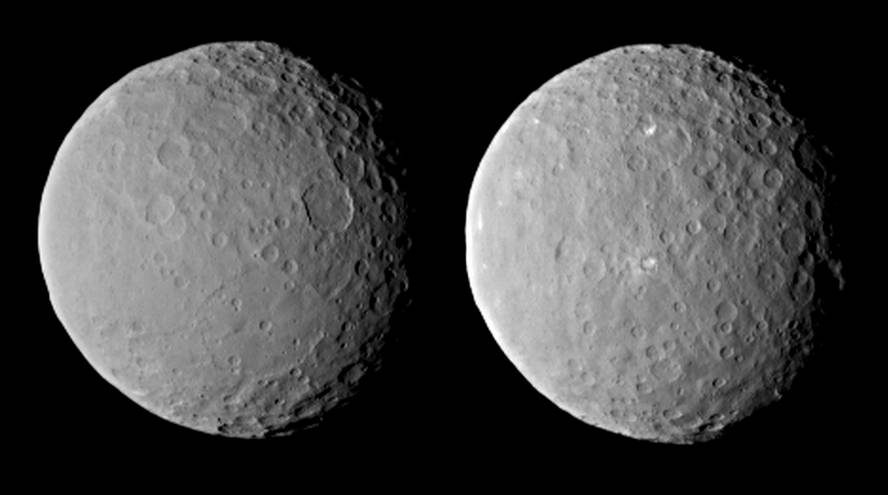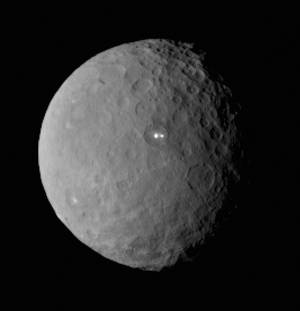Closer and closer to the nano planet
The main objective of the Dawn mission is to gather information to better understand the genesis of the Solar System and, to do so, believe that Zeres' knowledge will be of great help, as it is the largest body of the asteroid belt. In addition, the images they have received as they approach have aroused curiosity among astronomers to see things they did not expect in Ceres.
For example, last week two bright spots were detected on the surface of Ceres. In fact, Zeres has many craters and in one of them the two points were seen. According to NASA researchers, a severe impact appears to have made subcutaneous material visible. In fact, they have stressed that brightness is exceptional, but they have also stated that data is missing to draw clear conclusions. The image with the two points was taken on February 19, 46,000 km from Zeres, and now they intend to track the place to see if it has any change.
There is also another fact that accentuates the mystery: In January 2014 they learned that Zeres poured water vapour jets. The study of the images collected by the European telescope Herschel between November 2012 and March 2013 allowed to calculate the number of water vapors emitted: 6 liters per second. In addition, it was observed that the jets came out of two points, apparently found in one of the springs of the jets. “It is possible that the steam jet will occur due to the impact and that the ice or salt will loosen,” they explain from NASA.
16 months to answer questions
These details make Ceres very interesting. This is what astronomer Jesús Arregi and member of the Planetary Sciences Group of the UPV said: "We know that there is water and it seems that it has a clay surface and has suffered some kind of geological processes. If this were confirmed, it would push the hypothesis that the components of life on Earth (water, organic molecules) come from such bodies."
On the other hand, Arregi believes that the comparison between Zeres and Vesta will also have valuable consequences. The asteroid Vesta, one of those in the asteroid belt, was studied by Dawn from May 2011 to September 2014, proving that it doesn't look much like Ceres. For example, although the second body of the asteroid belt is the largest, it is quite smaller than Ceres (almost a third of it) and has no water, it is dry. In Arregi's opinion it is significant that there is a difference between the two: "Being both in the asteroid belt, one might think they should be similar. So why have they evolved so different? The Dawn mission will contribute to this."
In the coming months they want to answer other important questions: "One of the main objectives is to investigate the atmosphere. It is believed to have some atmosphere. And it is that under the skin there is water, and it is believed that it is from above and that it has been filtered," explained Arregi. They also want to study the gravity zone and the turning axis as well as the surface. "They intend to make a topographic map," Arregi adds.
They will use the two spectrometers of the Dawn probe and the HD camera. Sixteen months later, Dawn loses strength and turns off and stays there orbiting around Ceres.







